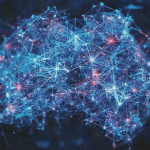Deploying Machine Learning Models with Docker and Kubernetes: A Comprehensive Guide
Deploying ML Models: A Comprehensive Guide with Docker and Kubernetes
Deploying machine learning models efficiently and securely is crucial for organizations looking to leverage the power of AI to gain a competitive edge. This guide provides a comprehensive overview of deploying ML models using Docker and Kubernetes, targeting data scientists and DevOps engineers who are increasingly tasked with bridging the gap between model development and real-world application. From containerizing your model to scaling it in a production environment, we’ll cover best practices and practical examples to streamline your deployment workflow, focusing on the critical aspects of MLOps.
This includes not only the technical steps but also the strategic considerations for ensuring model reliability, security, and scalability in cloud computing environments. The modern landscape of Machine Learning (ML) demands robust deployment strategies. Organizations are moving beyond simple proof-of-concept models and seeking to integrate AI into core business processes. This requires a shift towards scalable and maintainable infrastructure. Docker, a leading containerization technology, allows us to package ML models with all their dependencies into isolated containers, ensuring consistent performance across various environments.
Kubernetes, a powerful orchestration platform, then automates the deployment, scaling, and management of these containerized models, enabling high availability and efficient resource utilization. This combination forms the backbone of many successful MLOps pipelines. Containerization with Docker addresses a common challenge in ML deployment: dependency management. By encapsulating the model, its runtime environment (e.g., Python version, specific libraries), and all necessary dependencies within a Docker image, we eliminate the “it works on my machine” problem. For example, imagine a model trained using TensorFlow 2.8 and a specific version of NumPy.
Docker ensures that the production environment mirrors the development environment, preventing compatibility issues that can lead to model failures. This approach streamlines the deployment process and reduces the risk of errors caused by mismatched dependencies, saving valuable time and resources for both data scientists and DevOps engineers. Kubernetes then takes these containerized models and orchestrates their deployment across a cluster of machines. It automates tasks such as scaling the model based on traffic, rolling out updates without downtime, and monitoring the health of the deployed model.
For instance, if your ML model is experiencing high traffic during peak hours, Kubernetes can automatically scale the number of running containers to handle the increased load. Similarly, when you need to update your model with a new version, Kubernetes can perform a rolling update, gradually replacing the old containers with the new ones while ensuring continuous service availability. This dynamic management is essential for maintaining a reliable and responsive AI-powered application. Security is paramount throughout the ML deployment lifecycle.
Docker images should be scanned for vulnerabilities before deployment, and Kubernetes provides mechanisms for controlling access to deployed models and the data they process. Implementing network policies within Kubernetes can restrict communication between different services, limiting the potential impact of a security breach. Furthermore, proper monitoring and logging are crucial for detecting and responding to security incidents in real-time. By incorporating security best practices into your Docker and Kubernetes deployment strategy, you can protect your ML models and the sensitive data they handle from unauthorized access and malicious attacks. This holistic approach to security is a fundamental aspect of responsible MLOps.
Containerizing Your ML Model with Docker
Containerizing your Machine Learning model is paramount for achieving consistency and reproducibility across diverse environments, from development to staging and finally, production. Docker provides the perfect mechanism for encapsulating your model, its dependencies (such as specific versions of TensorFlow, PyTorch, or scikit-learn), the runtime environment (including Python version and system libraries), and the entry point for execution. This ensures that your model behaves identically regardless of the underlying infrastructure. The core of this process is the Dockerfile, a blueprint that meticulously specifies each step required to build your container image.
Consider it a recipe for your model’s deployment environment. A well-crafted Dockerfile is the foundation of a reliable and scalable Machine Learning deployment. Creating an effective Dockerfile involves several crucial considerations. First, start with a lean base image. The example `FROM python:3.9-slim-buster` utilizes a slim version of Python, minimizing the image size and reducing potential security vulnerabilities. Next, carefully manage your dependencies. The `COPY requirements.txt .` and `RUN pip install -r requirements.txt` commands install the necessary Python packages.
It’s best practice to explicitly list all dependencies in a `requirements.txt` file to ensure reproducibility. Avoid installing unnecessary packages, as they can bloat the image size and increase build time. Tools like `pip freeze > requirements.txt` can help you capture the exact versions of your currently installed packages. Optimizing your Docker image for both size and build speed is critical for efficient Machine Learning Deployment. Smaller images translate to faster deployments and reduced storage costs in Cloud Computing environments.
Build speed directly impacts the development cycle, allowing for quicker iterations and faster feedback loops. Techniques like multi-stage builds can significantly reduce image size. This involves using one stage to build the application and its dependencies, and then copying only the necessary artifacts to a final, smaller image. Caching Docker layers effectively can also drastically improve build times. Docker intelligently caches each layer of the Dockerfile, so if a layer hasn’t changed, it doesn’t need to be rebuilt.
Therefore, arrange your Dockerfile to place frequently changing instructions (like copying source code) towards the end. Beyond the basic Dockerfile structure, consider incorporating best practices for MLOps. For instance, use environment variables to configure model parameters and access keys instead of hardcoding them directly into the image. This enhances security and allows for easier configuration in different environments. Leverage `.dockerignore` files to exclude unnecessary files and directories from the image, further reducing its size and build time.
This is particularly useful for excluding large datasets or temporary files that are not required for model serving. Regularly scan your Docker images for vulnerabilities using tools like Clair or Anchore to ensure a secure Deployment pipeline. Integrating these security measures into your DevOps workflow is essential for maintaining the integrity of your Machine Learning models. Finally, remember that containerization is not just about packaging your model; it’s about creating a self-contained, portable unit that can be easily deployed and scaled. When combined with Kubernetes, Docker enables you to orchestrate your Machine Learning Deployment with unparalleled flexibility and control. The example `CMD [“python”, “app.py”]` specifies the command to run when the container starts, typically launching your model serving application. This command acts as the entry point, making your container executable and ready to handle prediction requests. By mastering Docker, you lay the groundwork for a robust and scalable Machine Learning infrastructure in the cloud.
Orchestrating Deployment with Kubernetes
Kubernetes emerges as a powerful orchestration platform, simplifying the complexities of deploying and managing containerized machine learning models. It automates tasks like scaling, rolling updates, and self-healing, freeing data scientists and DevOps engineers to focus on model development and optimization rather than infrastructure management. Defining Kubernetes manifests, specifically Deployments and Services, is crucial for declaring the desired state of your application. These manifests act as blueprints, instructing Kubernetes on how to deploy and manage your containers, ensuring consistent and reliable operation across diverse environments.
For instance, a Deployment ensures that a specified number of replica pods, each running your model’s container, are always running. If a pod fails, Kubernetes automatically replaces it, maintaining high availability. Consider a scenario where you’ve trained a sophisticated fraud detection model. Containerizing this model with Docker ensures portability, allowing you to seamlessly move it from development to testing and finally to production. Kubernetes then orchestrates the deployment of this containerized model across a cluster of machines, ensuring resilience and scalability.
A Kubernetes Service acts as a stable entry point to your deployed model, abstracting away the dynamic nature of individual pods. This allows other services or applications to interact with your model consistently, regardless of the underlying pod changes. The Service also facilitates load balancing across multiple pods, distributing incoming requests efficiently. Leveraging Kubernetes’ rolling update feature is critical for deploying updates to your model without disrupting service. Rolling updates gradually replace older pods with newer ones, ensuring a smooth transition and minimizing downtime.
This is particularly important in real-time applications like fraud detection or recommendation systems, where continuous availability is paramount. Furthermore, Kubernetes’ autoscaling capabilities dynamically adjust the number of replicas based on real-time demand. This ensures optimal resource utilization and cost-efficiency. For example, during peak hours, Kubernetes can automatically scale up the number of pods to handle increased traffic and then scale down during off-peak hours to conserve resources. Beyond Deployments and Services, Kubernetes offers a rich ecosystem of tools and features for managing complex deployments.
ConfigMaps and Secrets allow you to externalize configuration parameters and sensitive data, respectively, enhancing security and maintainability. Namespaces provide logical isolation, enabling you to segregate different environments like development, testing, and production within the same cluster. These advanced features empower organizations to build robust and scalable machine learning pipelines, accelerating the deployment and adoption of AI-driven solutions. By integrating Docker and Kubernetes into your MLOps workflow, you gain a powerful platform for managing the entire lifecycle of your machine learning models, from development to deployment and beyond.
Implementing robust monitoring and logging practices within your Kubernetes cluster is essential for ensuring the health and performance of your deployed models. Tools like Prometheus can scrape metrics from your application, providing insights into key performance indicators like request latency, error rates, and resource utilization. Integrating these metrics with visualization platforms like Grafana allows you to create dashboards and alerts, enabling proactive monitoring and rapid issue identification. Centralized logging solutions, such as Elasticsearch and Kibana, aggregate logs from all your pods, providing a unified view of application activity. This facilitates debugging, performance analysis, and security auditing, ensuring the reliable and efficient operation of your deployed machine learning models.
Monitoring and Logging for Deployed Models
Implement robust monitoring and logging to track model performance, identify issues, and ensure reliable operation. Use tools like Prometheus to collect metrics and Grafana to visualize them. Centralized logging helps in debugging and auditing. Example Prometheus configuration: yaml
– job_name: ‘my-model’
static_configs:
– targets: [‘my-model-service:8080’] Effective monitoring is paramount in a Machine Learning Deployment pipeline. It moves beyond simply checking if the application is running; it involves tracking key performance indicators (KPIs) specific to the model itself.
These KPIs might include prediction accuracy, inference latency, and data drift. For example, a sudden drop in prediction accuracy could indicate a problem with the model’s training data or a change in the input data distribution. By closely monitoring these metrics, DevOps and MLOps engineers can proactively identify and address potential issues before they impact the end-users. Centralized logging plays a crucial role in debugging and auditing deployed Machine Learning models. Logs provide a detailed record of the model’s behavior, including input data, predictions, and any errors encountered.
This information is invaluable for troubleshooting issues and understanding the model’s decision-making process. Consider a scenario where a model is making biased predictions. By analyzing the logs, data scientists can identify patterns in the input data that are contributing to the bias and take corrective action, such as retraining the model with a more balanced dataset. Tools like Elasticsearch, Fluentd, and Kibana (EFK stack) or Loki are commonly used for centralized logging in Kubernetes environments.
Integrating Prometheus and Grafana into your Kubernetes deployment provides a powerful monitoring solution tailored for Machine Learning models. Prometheus excels at collecting time-series data from various sources, including your model’s API endpoints. Grafana then visualizes this data in customizable dashboards, allowing you to track key metrics at a glance. For example, you can create a dashboard that displays the model’s average inference latency, the number of requests per second, and the CPU and memory utilization of the container running the model.
This comprehensive view of your model’s performance enables you to quickly identify bottlenecks and optimize resource allocation. This is a common practice in modern Cloud Computing and DevOps environments. Beyond basic infrastructure monitoring, consider implementing model-specific metrics. These could include the distribution of predicted classes, the confidence scores of predictions, and the frequency of specific feature values in the input data. Tracking these metrics can help you detect data drift, which occurs when the statistical properties of the input data change over time.
Data drift can significantly impact model accuracy, so it’s crucial to identify and address it promptly. Tools like Evidently AI and Arize AI are specifically designed for monitoring Machine Learning models and detecting data drift. These tools often integrate seamlessly with Kubernetes and Prometheus, providing a comprehensive monitoring solution for your deployed models. Security considerations are also important, ensuring that monitoring data is securely stored and accessed. Finally, remember that monitoring and logging are not one-time tasks but rather ongoing processes.
As your model evolves and your data changes, you’ll need to adapt your monitoring strategy accordingly. Regularly review your dashboards and logs to identify new patterns and potential issues. Consider implementing automated alerts that trigger when key metrics exceed predefined thresholds. This proactive approach will help you ensure the reliable and accurate operation of your Machine Learning models in production. This continuous feedback loop is a cornerstone of MLOps, enabling continuous improvement and optimization of your deployed models within a robust Containerization and Orchestration framework.
Security and Optimization
Security is paramount when deploying Machine Learning models, especially in production environments. A robust security posture isn’t just about preventing breaches; it’s about maintaining the integrity of your model’s predictions and protecting sensitive data. Implement security best practices throughout the entire MLOps pipeline, starting with image scanning. Tools like Anchore or Clair can automatically scan your Docker images for known vulnerabilities before deployment, preventing compromised containers from ever reaching your Kubernetes cluster. Access control is also critical.
Employ Kubernetes RBAC (Role-Based Access Control) to restrict access to your deployments based on the principle of least privilege. Network policies further segment your cluster, limiting communication between pods and preventing lateral movement in case of a security incident. These proactive measures form the foundation of a secure deployment strategy. Protecting sensitive data used by your models is another crucial aspect of security. Consider implementing data encryption at rest and in transit. For example, use Kubernetes Secrets to store sensitive information like API keys and database passwords, and encrypt these secrets using a solution like HashiCorp Vault.
When handling personally identifiable information (PII), explore techniques like differential privacy or federated learning to minimize the risk of data leakage. Regularly audit your data handling practices to ensure compliance with relevant regulations like GDPR or HIPAA. These measures are essential for building trust and maintaining the ethical integrity of your Machine Learning deployments. Beyond preventative measures, continuous monitoring and logging are crucial for detecting and responding to security threats. Implement intrusion detection systems (IDS) and intrusion prevention systems (IPS) to identify malicious activity in your Kubernetes cluster.
Centralized logging, using tools like Elasticsearch, Fluentd, and Kibana (EFK stack), provides a comprehensive audit trail for security investigations. Correlate logs from different sources, including your application, Docker containers, and Kubernetes infrastructure, to gain a holistic view of your security posture. Regularly review these logs for suspicious patterns or anomalies that could indicate a security breach. A proactive monitoring strategy allows you to quickly identify and mitigate security incidents before they cause significant damage. Regularly updating dependencies and patching vulnerabilities is essential for maintaining a secure Machine Learning deployment.
Use automated tools like Dependabot to monitor your dependencies for known vulnerabilities and automatically create pull requests to update them. Implement a robust patching process for your operating systems and Kubernetes infrastructure. Subscribe to security advisories from your vendors and the Kubernetes community to stay informed about the latest security threats. Consider using immutable infrastructure, where you replace entire containers or virtual machines instead of patching them in place, to minimize the risk of introducing new vulnerabilities.
By staying vigilant and proactive, you can significantly reduce your attack surface and protect your Machine Learning models from security threats. Finally, consider the security implications of your model itself. Adversarial attacks, where malicious actors craft inputs designed to fool your model, are a growing concern. Implement techniques like adversarial training to make your model more robust against these attacks. Regularly evaluate your model’s performance against adversarial examples to identify potential weaknesses. By addressing both infrastructure security and model security, you can ensure the overall integrity and reliability of your Machine Learning deployments. By following these steps, you can effectively deploy and manage your ML models using Docker and Kubernetes, ensuring scalability, reliability, and security in production within a Cloud Computing and DevOps environment, fostering a mature MLOps practice.


